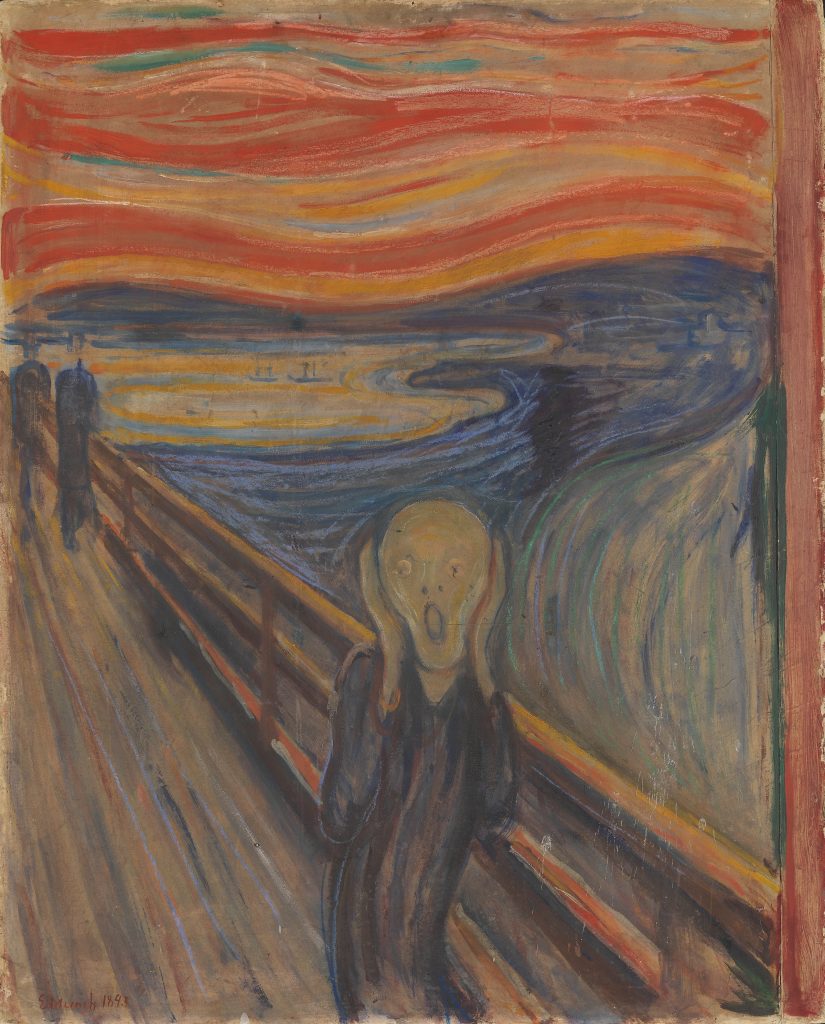The Scream
“The Scream” is an iconic painting by the Norwegian artist Edvard Munch, created in 1893. The painting is part of a series of works that Munch created, exploring themes of anxiety, alienation, and the fragility of the human psyche.
The painting depicts a figure on a bridge, with hands covering its ears, and a face contorted in a scream of agony. The figure is set against a backdrop of a red and orange sky, with a cityscape in the distance. The use of bold, contrasting colors and distorted shapes creates a sense of unease and psychological turmoil.
Munch was inspired to create “The Scream” by a personal experience he had while walking with friends one evening. He later wrote that he felt a “great, unending scream piercing through nature,” and that the painting was a representation of this overwhelming emotional experience.
The painting has been interpreted in various ways, with many seeing it as a symbol of the human condition in the modern age. The figure’s scream has been seen as a representation of the existential angst that many people feel in the face of the modern world, with its rapid pace of change, technological advances, and social dislocation.
“The Scream” is also notable for its influence on popular culture. The image of the figure screaming in agony has become a cultural icon, used in countless parodies and homages in movies, television shows, and other forms of media. The painting has also inspired other artists, including the German Expressionist movement, which drew inspiration from Munch’s use of bold colors and distorted shapes.
Despite the painting’s widespread popularity and cultural significance, it is also a deeply personal work of art, reflecting Munch’s own struggles with mental illness and emotional turmoil. As Munch himself once said, “My art is self-confession…through it, I seek to clarify my relationship to the world.”
In conclusion, “The Scream” is a powerful and deeply emotional work of art that has had a profound impact on art and culture. It is a testament to Munch’s artistic vision and his ability to capture the complexities of the human experience. The painting remains a beloved and enduring work of art, continuing to inspire and provoke thought and emotion in viewers around the world.

